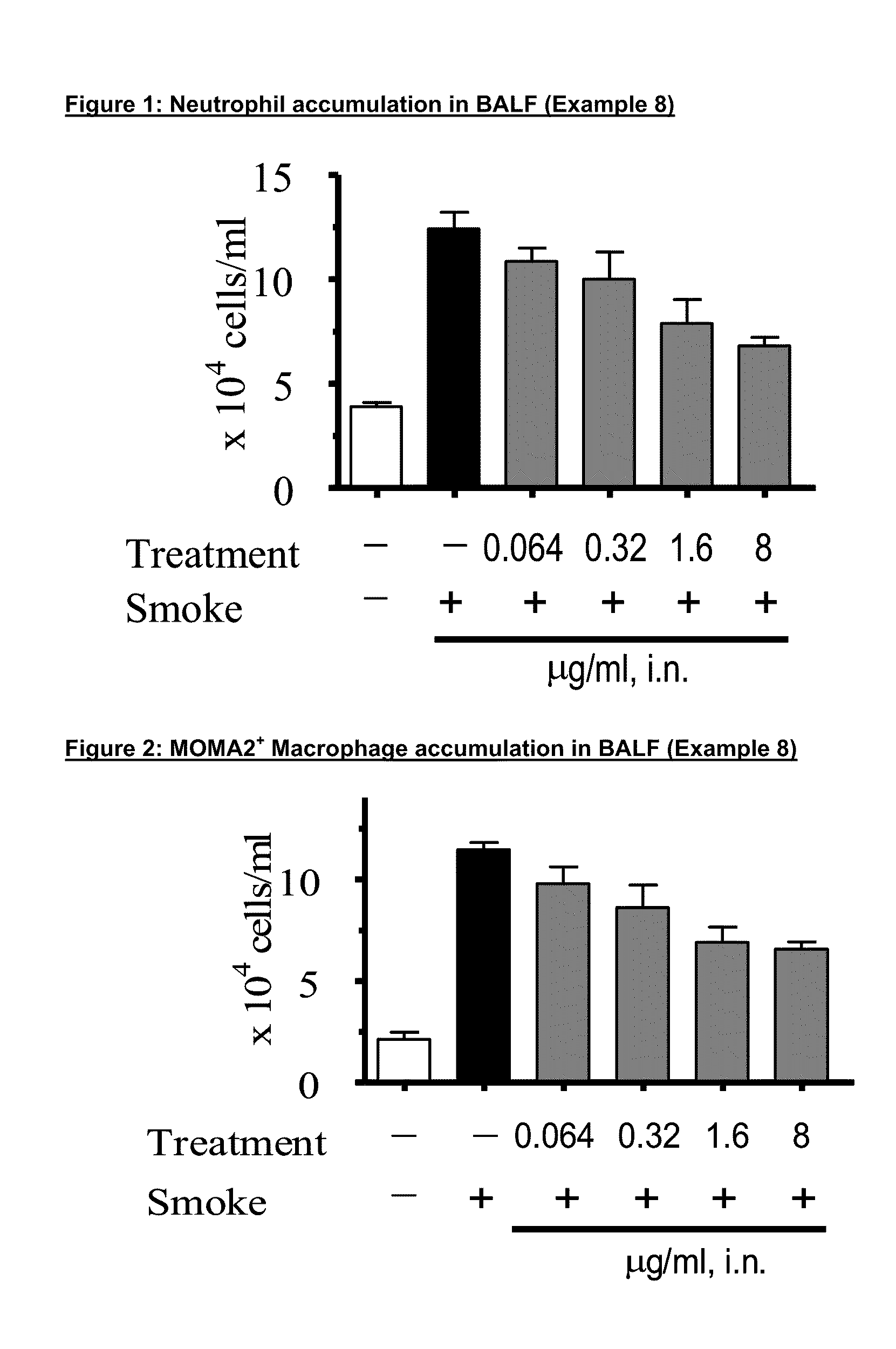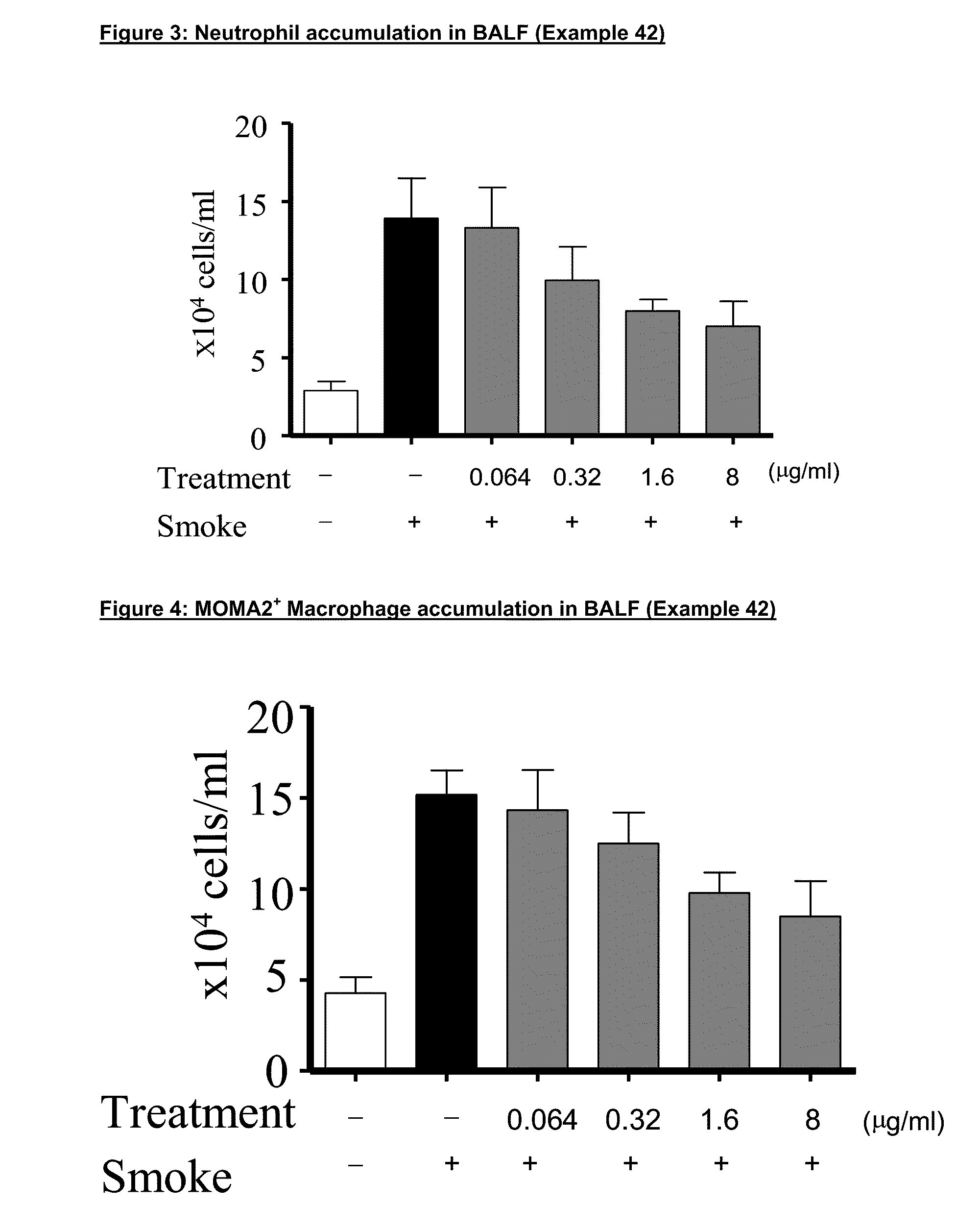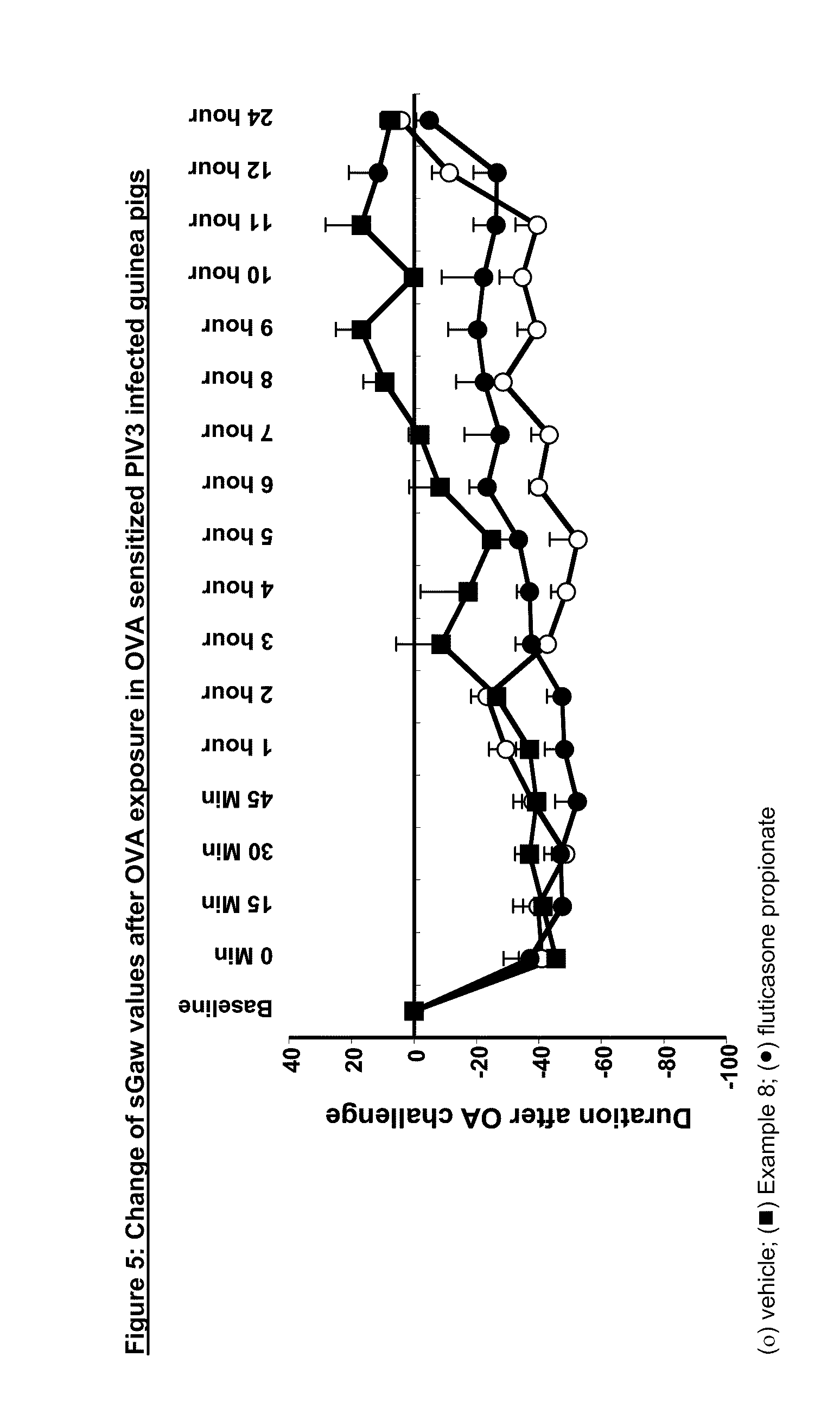P38 map kinase inhibitors
a kinase inhibitor and map technology, applied in the field of p38 map kinase inhibitors, can solve the problems of high toxicity of early generations of compounds, affecting the phosphorylation of p38 mapks or jnks, and death of patients,
- Summary
- Abstract
- Description
- Claims
- Application Information
AI Technical Summary
Benefits of technology
Problems solved by technology
Method used
Image
Examples
example 1
N-(4-(4-(3-(3-tert-Butyl-1-p-tolyl-1H-pyrazol-5-yl)ureido)naphthalen-1-yloxy)pyridin-2-yl)-2-(2-methoxyethoxy)acetamide
[0390]
[0391]To a solution of Intermediate A1 (50 mg, 0.099 mmol) and DIPEA (86 μl, 0.493 mmol) in dry THF (3.0 mL) at 0° C. under nitrogen was added dropwise 2-(2-methoxyethoxy)acetyl chloride (60.2 mg, 0.395 mmol) and the reaction mixture maintained at 0° C. for 30 min and then warmed to RT. After 3 hr the reaction was quenched by the addition of 1% NH3 in MeOH solution (2.0 mL) and after further 45 min the resulting mixture was evaporated in vacuo. The residue was purified by flash column chromatography (SiO2, 12 g, [5% MeOH in EtOAc] in isohexane, 0 to 75%, gradient elution) to afford the title compound, Example 1 as a white solid (40 mg, 62%); Rt 2.56 min (Method 2); m / z 623 (M+H)+ (ES+); 1H NMR (400 MHz, DMSO-d6) δ: 1.28 (9H, s), 2.40 (3H, s), 3.27 (3H, s), 3.47 (2H, m), 3.62 (2H, m), 4.05 (2H, s), 6.41 (1H, s), 6.71 (1H, dd), 7.35-7.38 (3H, overlapping m), 7.4...
example 2
N-(4-(4-(3-(3-tert-Butyl-1-p-tolyl-1H-pyrazol-5-yl)ureido)naphthalen-1-yloxy)pyridin-2-yl)tetrahydro-2H-pyran-4-carboxamide
[0392]
[0393]To a suspension of tetrahydro-2H-pyran-4-carboxylic acid (38.5 mg, 0.296 mmol) in dry DCM (3.0 mL) under nitrogen at 0° C. was added oxalyl chloride (29.2 μl, 0.345 mmol) followed by DMF (1 drop) and the mixture maintained at 0° C. for 20 min and then warmed to RT. After 1 hr the mixture was cooled to 0° C., and Intermediate A1 (50 mg, 0.099 mmol) and DIPEA (86 μl, 0.493 mmol) were added. The reaction mixture was kept at 0° C. for 30 min and was then warmed to RT and after 2.25 hr was quenched by the addition of a solution of 1% NH3 in MeOH (2.0 mL). After a further 30 min the resulting mixture was evaporated in vacuo and the residue was subjected to SCX capture and release. The crude product so obtained was purified by flash column chromatography (SiO2, 12 g, [5% MeOH in EtOAc] in isohexane, 0-85%, gradient elution) to afford the title compound, Exa...
example 3
N-(4-(4-(3-(3-tert-Butyl-1-p-tolyl-1H-pyrazol-5-yl)ureido)naphthalen-1-yloxy)pyridin-2-yl)-2-(methylthio)acetamide
[0394]
[0395]To a solution of 2-(methylthio)acetic acid (28.4 μl, 0.326 mmol) in dry DCM (3.0 mL) under nitrogen and at 0° C. was added oxalyl chloride (32.2 μL, 0.380 mmol) followed by DMF (1 drop) and the mixture maintained at 0° C. for 20 min and then warmed to RT. After 1 hr the mixture was cooled to 0° C. and Intermediate A1 (55 mg, 0.109 mmol) and DIPEA (95 μL, 0.543 mmol) were added. The reaction mixture was kept at 0° C. for 30 min and then warmed to RT and after 3 hr was quenched by the addition of a solution 1% NH3 in MeOH (3.0 mL). After a further 16 hr the resulting mixture was evaporated in vacuo and the residue was purified by flash column chromatography (SiO2, 12 g, [5% MeOH in EtOAc] in isohexane, 0-60%, gradient elution). The product so obtained was subjected to SCX capture and release then repurified by flash column chromatography (SiO2, 12 g, [5% MeOH i...
PUM
| Property | Measurement | Unit |
|---|---|---|
| mass mean diameter | aaaaa | aaaaa |
| mass mean diameter | aaaaa | aaaaa |
| flow rate | aaaaa | aaaaa |
Abstract
Description
Claims
Application Information
 Login to View More
Login to View More - R&D
- Intellectual Property
- Life Sciences
- Materials
- Tech Scout
- Unparalleled Data Quality
- Higher Quality Content
- 60% Fewer Hallucinations
Browse by: Latest US Patents, China's latest patents, Technical Efficacy Thesaurus, Application Domain, Technology Topic, Popular Technical Reports.
© 2025 PatSnap. All rights reserved.Legal|Privacy policy|Modern Slavery Act Transparency Statement|Sitemap|About US| Contact US: help@patsnap.com



